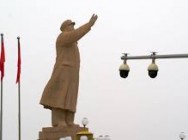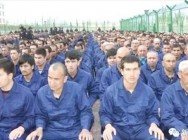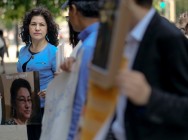“They look at India as a critical swing state in Asia, and they see India now moving inexorably toward the U.S., which makes it very difficult for China to carve out a Sinocentric Asia,” said Brahma Chellaney, an analyst affiliated with the Center for Policy Research in New Delhi.
He said events of recent months — particularly India’s refusal to participate in the “One Belt, One Road” project, the vast, strategic transportation network supported by China’s president, Xi Jinping — have galled Chinese officials.
“Without India’s entry,” he said, “O.B.O.R. will never be complete.”
Analysts on both sides could reel off examples of diplomatic visits that had been interrupted by border spats. In 2014, when Mr. Modi hosted Mr. Xi for his first visit in eight years, the two men were at an opulent riverfront banquet when news broke of a skirmish between their armies.
Mr. Chellaney said the incursions had been ordered by the Chinese side “to remind India that diplomacy is an opportunity for India to concede to Chinese demands, or else China will use its muscle.”
Chinese analysts, not surprisingly, saw the current conflict the other way around: Some theorized that Mr. Modi had ordered his troops to cross the border to impress upon Mr. Trump that India could play a central role in containing Chinese ambitions.
Han Hua, an associate professor of international relations at Peking University in Beijing, called the timing “very strange.”
“Given that these kinds of disputes always coincide with major international events, we could at least say they have tactical purposes, if not strategic,” she said.
India, a country famously wary of forming strategic alliances, has drawn significantly closer to the United States since Mr. Modi took office. China has the world’s fastest-growing submarine fleet, and India was shocked into action in 2014, when a People’s Liberation Army submarine docked in the Sri Lankan port of Colombo.
Last year, Washington and New Delhi signed a landmark agreement on defense logistics support that had been under discussion for nearly a decade, and the United States designated India a “major defense partner.”
In Washington, Mr. Trump announced the sale to India of advanced surveillance drones that can be used to track Chinese naval movements, and which have not, until now, been shared with a non-NATO military. These steps are being watched closely by Beijing.
“They fear India getting too close to America,” said Ashok Malik, a political analyst at the Observer Research Foundation. “They don’t fear India by itself, or India getting too close to anyone else.”
The confrontation occurred at the edge of the Chumbi Valley, a Chinese enclave that creates a wedge between Bhutan and the Indian region of Sikkim. The site, at an elevation of nearly 10,000 feet, is strategic because it offers access to a thin strip of Indian territory known as the Chicken Neck, which connects India’s far northeast to the rest of the country.
Chinese troops were constructing roads in that region when Indian soldiers, with what analysts described as unusual assertiveness, forced them to stop. Beijing insists that the spot — unlike other places where the two sides have frequent standoffs — has a clearly delineated border that has long been accepted by both countries. In protest, China cut off access to a group of Indian pilgrims who must cross a Chinese pass on their way to Mount Kailash, which is considered sacred by Hindus and Buddhists.
Gen. V. P. Malik, a former chief of the Indian Army, said troops regularly scuffled at that spot.
“We believe that it is part of our territory, and I am sure they must think the same way on their side,” General Malik said. “You know these nibbling tactics of the Chinese. They do it all the time, everywhere. They try to nibble things here and there.”
In China, Global Times, which sometimes reflects government thinking, carried an unusually harsh warning to India.
“We must not just send them back to where they were before crossing the border, but also show no mercy in media reports,” it said. “India is far from the point where it could be arrogant in front of China. Its G.D.P. is only a quarter of China’s, its military budget is a third of China’s. To remain friendly with China and cautiously manage the border issue would be its best option.”




















